Chubb Detector Lock
After counterfeit keys were used to commit a burglary at Portsmouth Dockyard in 1817, the British government issued a competition to create a lock that could only be opened using its own key. In response, Jeremiah Chubb designed the Chubb Detector lock, the principle of which was first patented in 1818. With his Detector lock being impossible to pick or open without its dedicated key, as well as having the ability to alert its owner to any unauthorised access attempts, Jeremiah won the competition prize of 100 Guineas.
If access is attempted using a lock pick or a counterfeit key, it will invariably cause at least one of the levers to raise beyond the height of the lever gate, thus raising the detector lever simultaneously; this will cause the detector lever to become trapped in this raised position by the detector spring. In this state, the lock bolt is essentially seized, with only the original key or, in the case of pre-1824 locks, a regulating key being able to reset and free the mechanism.
When the owner tries to unlock the lock (by turning the key clockwise), the key will stick, informing him that some sort of tampering has taken place. The owner will need to turn the key anti-clockwise slightly to release the detector spring, which will in turn release the trapped detector lever and free the lock bolt; the lock can now be unlocked as normal by turning the key clockwise.
The earliest versions of the Chubb Detector lock required a special regulating key to disengage the locking detector spring; this mechanism design was improved in 1824, no longer requiring the use of a separate regulating key but instead allowing the main key to also assume this responsibility. Further notable design improvement patents were taken out in 1833 and finally in 1847, with their ‘Definitive’ Detector lock.
At the time of the Great Exhibition in 1851 an American locksmith, Alfred Charles Hobbs, announced that he intended to pick one of Chubb’s Detector locks. The lock Hobbs had in mind was one that was fixed to an iron vault door within the Depository of Valuable Papers, in Westminster. Although invited, no Chubb representative attended this event; however there were eleven signed witnesses that saw Hobbs unlock Chubb’s Detector lock in only 25 minutes, then taking a further 7 minutes to relock it without causing any harm to the lock. Hobbs became an overnight celebrity, going on to defeat an unanswered 61-year old challenge to open Bramah’s Challenge Lock.
Chubb identified that this failure in security was due to the visual and physical access to the lock levers gained via the keyhole. Within about a year, Chubb had introduced the additional fitting of a ‘barrel and curtain’ to their Detector lock; this revolving keyhole unit, designed by locksmith Charles Aubin, shielded all access to the lock mechanism besides what was required by the dedicated key. With many predating Chubb Detector locks also having the inclusion of a ‘barrel and curtain’, it is likely that Chubb themselves offered an optional service to retrofit them.
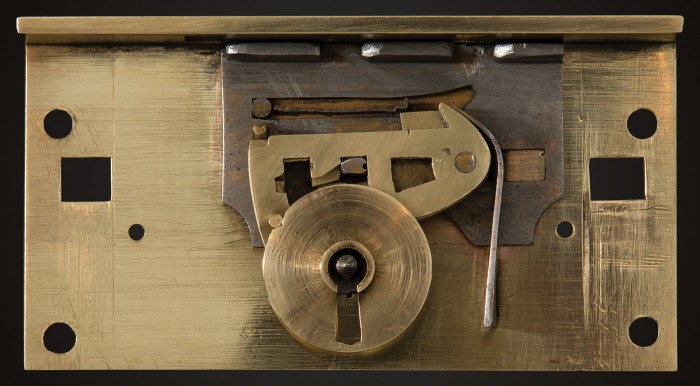
Front view of the internal mechanism of a Chubb ‘Definitive’ Detector lock with fitted ‘Barrel and Curtain’, from 1849.
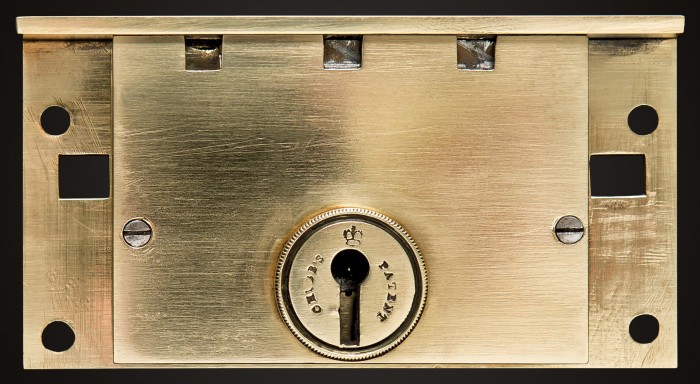
Front view of a Chubb ‘Definitive’ Detector lock from 1849.

Top view of a Chubb ‘Definitive’ Detector lock from 1849.
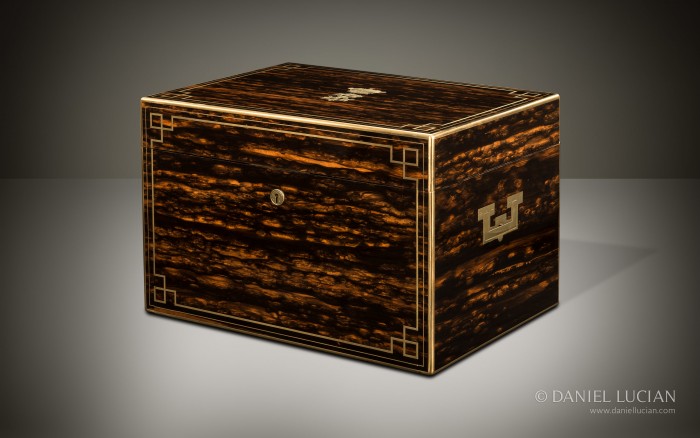
Extra large antique jewellery box in coromandel fitted with a Chubb ‘Definitive’ Detector lock from 1849 .
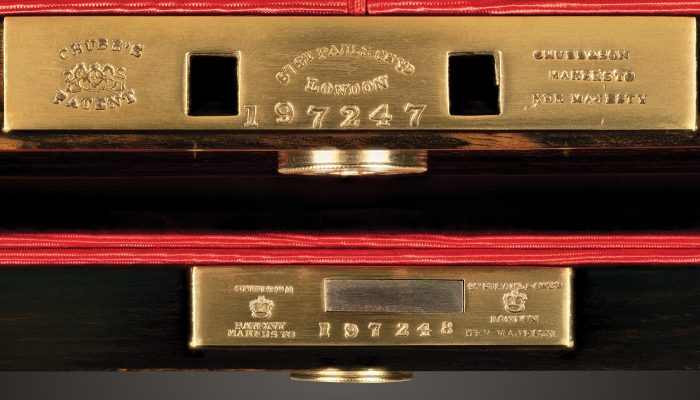
Top view of two Chubb ‘Definitive’ Detector locks from 1863.
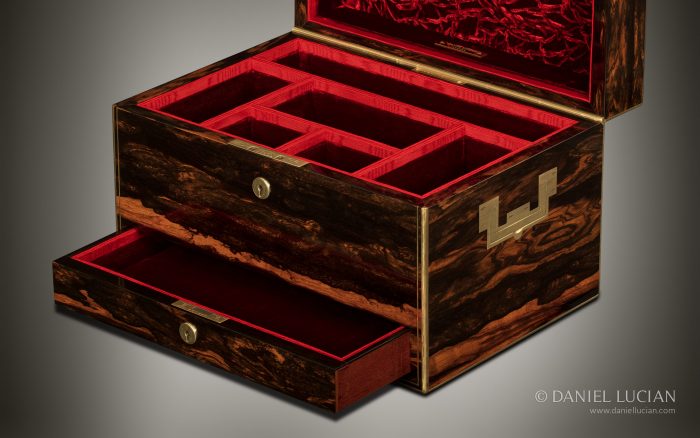
Antique Jewellery Box in Calamander by Mechi & Bazin, Fitted with Two Chubb ‘Definitive’ Detector Locks from 1863.
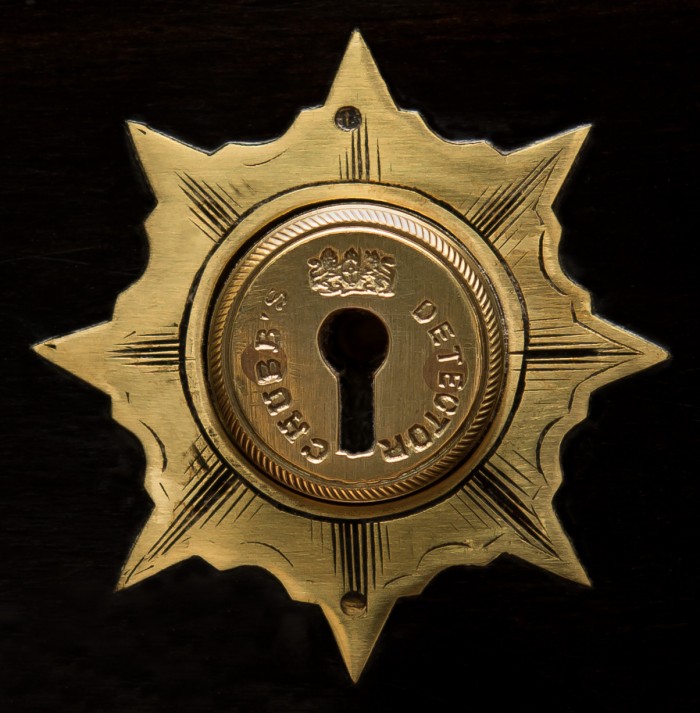
Chubb Dectector lock from an antique nécessaire de voyage dressing case by Aucoc Ainé à Paris.
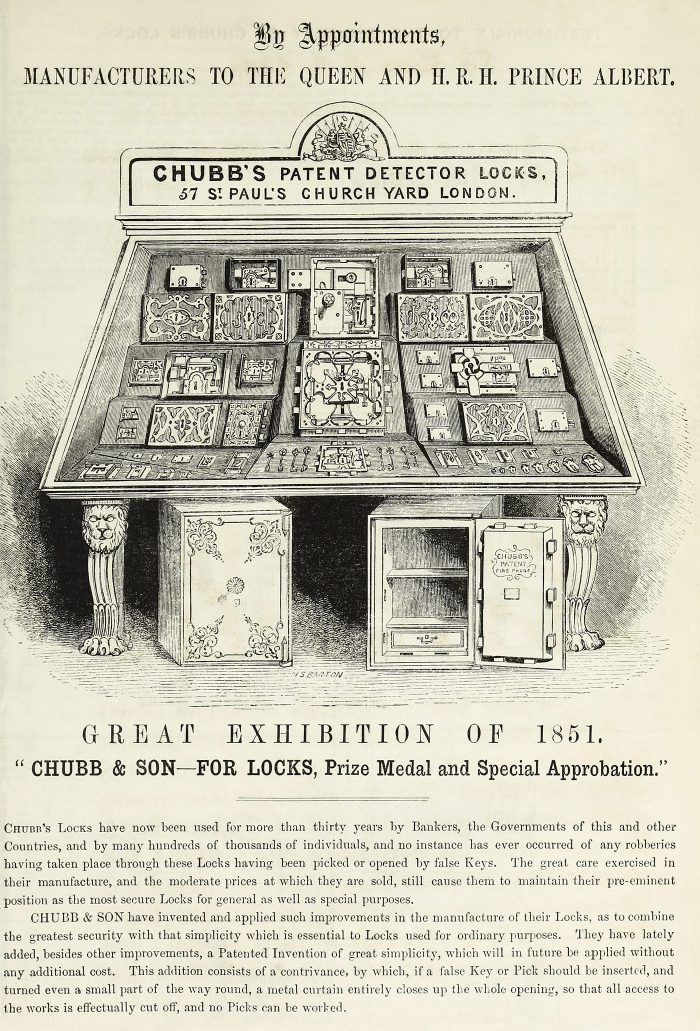
Chubb Detector lock advertisement taken from the ‘Paris Universal Exhibition 1855 – Catalogue of the Works Exhibited in the British Section of the Exhibition’.
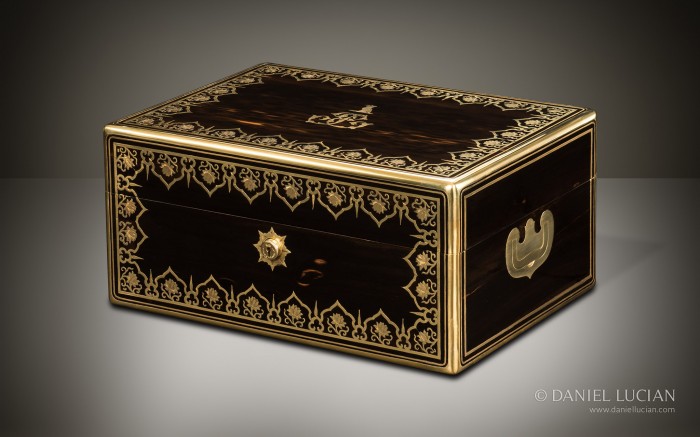
 Price On Application
Price On Application